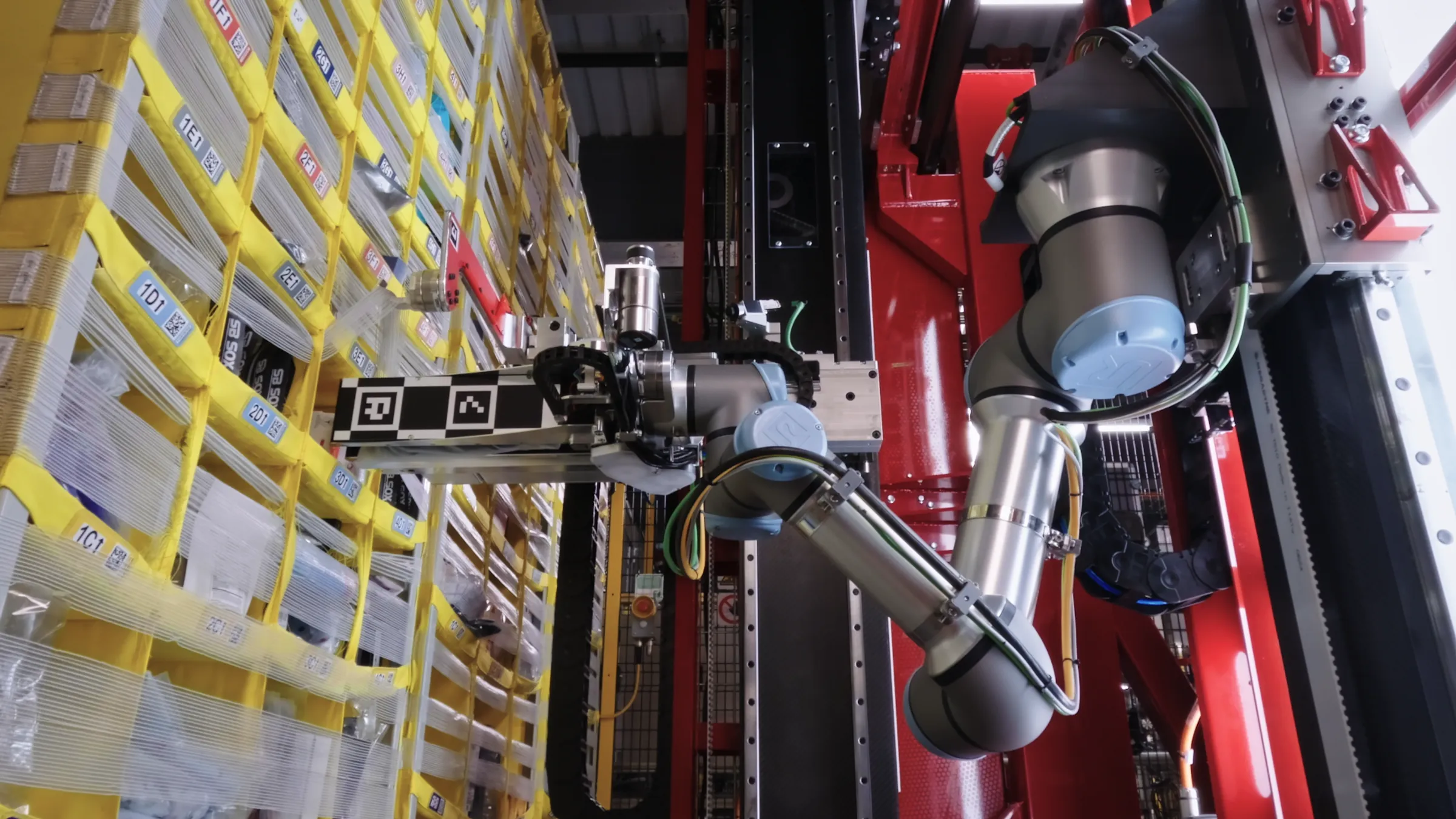
Amazon has unveiled a new robotic system called Vulcan at an event in Dortmund, Germany, describing it as “its first robotic system with a genuine sense of touch—designed to transform how robots interact with the physical world.” Vulcan’s primary purpose is warehouse operations, specifically stowing and picking items within Amazon’s mobile robotic inventory system.
The technology is detailed in two upcoming papers in IEEE Transactions on Robotics. Significant progress has been made since initial development, particularly in stowing operations. According to Aaron Parness, director of applied science at Amazon Robotics, the stowing robots have improved speed and reliability over more than 500,000 operational warehouse stows, reaching the point where the average robot now slightly outpaces the average human stower.
The stowing process at Amazon involves placing products into mobile robotic pods containing fabric cubbies (bins) with elastic bands across the front to secure items. Traditionally, human stowers locate suitable spaces in bins, pull aside the plastic band, and insert items. The system then records each item’s location before the pod returns to the warehouse and is replaced by the next one.
The scale of Amazon’s inventory management is immense – more than 14 billion items are manually stowed annually in Amazon warehouses. The company aims for Vulcan robots to handle 80 percent of these items at a rate of 300 items per hour while operating 20 hours daily.
After extensive development, Amazon’s stowing robots have tripled their speed over the past 18 months, now marginally surpassing the average human worker’s pace. However, Parness notes that expert humans still significantly outperform robots: “The fastest humans at this task are like Olympic athletes. They’re far faster than the robots, and they’re able to store items in pods at much higher densities.” This density efficiency is crucial, especially in urban warehouses where space commands a premium. Elite human stowers excel at creative three-dimensional “Tetris-ing” that robots haven’t yet mastered.
Where robots demonstrate superiority is in planning capabilities. Unlike human stowers who must mentally juggle 20-30 items while searching for suitable bin spaces, Vulcan can simultaneously analyze all item properties and available bins, including those in upcoming pods. “We can do this optimization over the whole set of information in 100 milliseconds,” explains Parness. Essentially, robots excel at the planning aspects of “Tetris-ing,” while humans currently maintain an advantage in physical manipulation – though that gap is narrowing as robots improve at operating in cluttered environments.
Amazon has deployed Vulcan stowing robots in operational warehouses in Germany and Washington state for over a year, allowing them to collect training data while successfully stowing hundreds of thousands of items.
The picking function of Vulcan presents its own unique challenges, which Amazon addresses separately in additional research.












Be the first to leave a comment